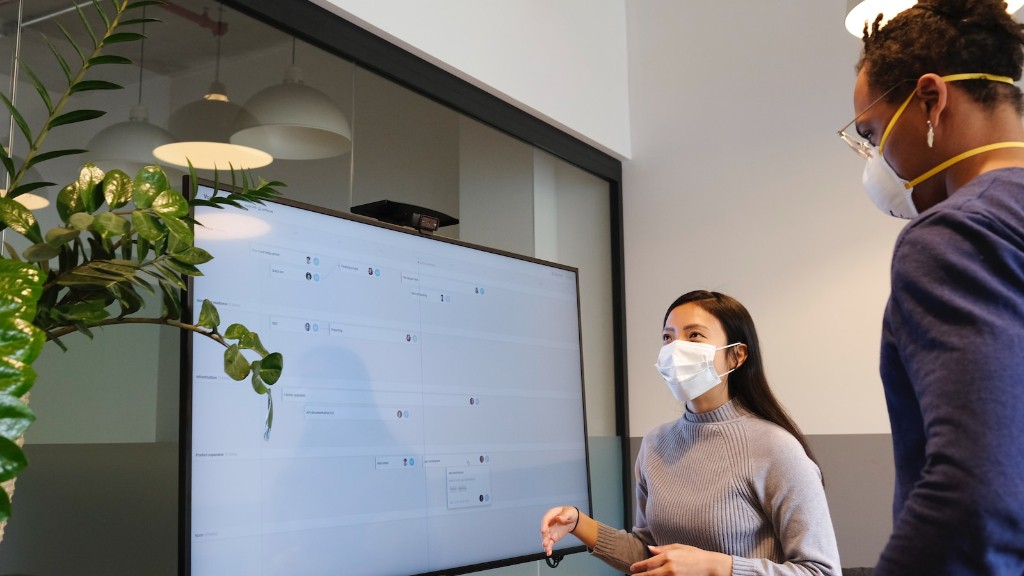As more and more businesses move online, they are faced with the challenge of how to appear higher in search engine rankings. This is where search engine optimization, or SEO, comes in. SEO is the process of optimizing a website to rank higher in search engine results. There are a number of factors that go into SEO, and it can be a complex and time-consuming process. However, it is worth it for businesses to invest in SEO, as it can result in increased web traffic and ultimately, more customers.
Search Engine Optimization, or SEO, is the process of optimizing a website for Google search with the goal of earning higher web traffic levels and improving the visibility of the site.
How SEO works step by step?
SEO can be a complex and time-consuming process, but it doesn’t have to be. By following these simple steps, you can start to see results quickly and effectively.
1. Find keywords: Start by researching and finding the right keywords for your website. Use tools like Google’s Keyword Planner to find the best keywords for your industry.
2. Put keywords in the page title: Once you have your keywords, make sure to include them in your page title. This will help your website come up in search results when people are searching for those keywords.
3. Put keywords in the page URL: Include keywords in your page URL for an extra boost in search rankings.
4. Put keywords in your meta description: In your meta description, include relevant keywords that describe your page content. This will help people find your page when they’re searching for those keywords.
5. Put keywords in your H1 text: Use keywords in your H1 text to help search engines understand what your page is about.
6. Use keywords in the page’s content: Use keywords throughout the content on your page to signal to search engines what your page is about.
7. Build links to your website:
SEO is a process of optimizing a website for Google search with the goal of earning higher web traffic levels and improving the visibility of the site. There are a variety of techniques that can be used in order to improve a website’s SEO, and some of the most effective are listed below.
1. Optimizing for Local Search: For small businesses and local mom-and-pop shops, local SEO is the way to go. By optimizing your website for local search, you can improve your chances of being found by potential customers who are searching for businesses like yours in their local area.
2. Speeding Up Your Website: A fast website is a good website, and Google knows it. That’s why website speed is a factor that is taken into account when determining your website’s ranking in search results. If your website is slow, work on speeding it up – it could make a big difference in your SEO.
3. Creating Optimized Landing Pages: A well-designed, relevant, and optimized landing page can do wonders for your website’s SEO. Landing pages that are specifically designed for the keywords you’re targeting can help improve your website’s ranking for those keywords, and can also help to increase your website’s conversion rate.
What is SEO and how it works
Search engine optimization (SEO) is the practice of improving the ranking of a website on search engines. The higher the ranking, the more likely people are to find the website. Because search is one of the main ways in which people discover content online, ranking higher in search engines can lead to an increase in traffic to a website.
There are a number of factors that influence a website’s ranking on search engines, including the quality of the website’s content, the number of links pointing to the website, and the use of keywords. SEO practitioners strive to improve a website’s ranking by making improvements in these areas.
While SEO is a complex topic, there are a few simple things that anyone can do to improve their website’s ranking. These include making sure that the website’s content is well-written and relevant to the website’s topic, and building links to the website from other high-quality websites.
Search engine optimization (SEO) is the process of improving the visibility and ranking of a website or web page in search engine results pages (SERPs). There are four types of SEO: on-page SEO, off-page SEO, local SEO, and technical SEO.
On-page SEO is the process of optimizing a website or web page for search engine visibility. This includes optimizing the content, structure, and Meta tags of a website or web page.
Off-page SEO is the process of optimizing a website or web page for search engine visibility by building links to it from other websites.
Local SEO is the process of optimizing a website or web page for search engine visibility in a specific geographic region.
Technical SEO is the process of optimizing a website or web page for search engine visibility by improving the website’s technical aspects, such as the site’s architecture, speed, and mobile responsiveness.
What is the golden rule of SEO?
If you want your content to engage readers, increase your search engine rankings and traffic, and attract high-quality links from other websites, then you need to make sure it’s well written. Content that is well written is easy to read and understand, and provides value to the reader. It’s also more likely to be shared, liked, and linked to by other people.
It is a fact of learning that all education is self-education. Although others can facilitate learning, nobody can teach you anything–they can only inspire you to teach yourself. That means if you want to learn search engine optimization (SEO), you’ll have to take matters into your own hands.
What are the 3 types of SEO?
There are three primary types of SEO that can help to improve your website’s visibility and ranking in organic search results: on-page SEO, off-page SEO, and technical SEO.
On-page SEO refers to the optimization of your website’s content and design to make it more attractive to search engines and improve your organic ranking. This can be accomplished through keyword research and optimization, interesting and informative content, and a well-designed website.
Off-page SEO refers to the actions you take outside of your website to improve your SERP ranking. This can be done through link building, social media engagement, and creating informative and keyword-rich content.
Technical SEO encompasses the more technical aspects of SEO and refers to the optimization of your website’s code and structure to make it more accessible to search engines. This includes optimizing your website’s title tags, meta descriptions, and header tags, as well as improving your website’s load time and mobile-friendliness.
There is no definitive answer for the best SEO tools for 2023. However, some common tools used by SEO professionals include Google Analytics and Google Search Console, Clearscope, Semrush, Ahrefs, Moz, Surfer SEO, and SE Ranking.
How do I create SEO keywords
As a business owner, it’s important to understand how to do keyword research in order to ensure that your website is ranking high in search engines. Here are the steps you need to take:
1. Make a list of important, relevant topics based on what you know about your business.
2. Fill in those topic buckets with keywords.
3. Understand how intent affects keyword research and analyze accordingly.
4. Research related search terms.
5. Use keyword research tools to your advantage.
Search engines are designed to help people find information on the internet. When you type a query into a search engine, it looks through all of the content on the internet that is relevant to your query and displays the results to you.
The goal of SEO is to improve the visibility of your website so that it appears higher in the search results. When your website is more visible, it is more likely to get clicked on, and this can lead to more traffic.
There are a number of things that you can do to improve your SEO, and it is important to keep up with the latest trends. Some of the most important things to keep in mind are to create keyword-rich content, to build backlinks, and to use social media to spread the word about your website.
What are the latest SEO techniques?
SEO techniques are important for any website looking to rank high in search engine results pages (SERPs). The techniques below all help improve your website’s ranking in SERPs by doing one or more of the following:
– learn from your competitors
– prioritize low-difficulty topics
– update old content
– fill content gaps
– create content hubs
– get more backlinks
– optimize internal links
– fix broken links
Content is, and always has been, king when it comes to SEO. The better your content is, the better your chances are of ranking highly in search engine results pages. Of course, this is assuming that your content is relevant to what people are searching for.
Code is the second C and refers to the code that makes up your website. This includes things like your website’s HTML and CSS, as well as your site’s structure and organization. A well-coded website is likely to rank higher than a website with poor code.
Credibility is the third and final C. Your website’s credibility is determined by things like the quality of your backlinks and your overall online reputation. A website with high credibility is more likely to rank highly in search engine results pages.
What are SEO tools
There are many different types of SEO tools, but some of the most popular and essential tools include keyword research tools, link analysis tools, and RankTrackr. These tools can help you to track your progress, assess your competition, and optimize your site for better search engine visibility.
The checklist is a great resource for optimising your website for better search engine ranking. It covers all the basics of on-page SEO, from title tags and meta descriptions to header tags and backlinks. By following the advice in the checklist, you can improve your website’s visibility and attract more traffic.
What should be avoided in SEO?
There are many common SEO mistakes that businesses make which can hurt their ranking and visibility. Some of these include having a slow site speed, bad reviews on Google, faulty Google My Business verification code, lack of location-specific pages, duplicate content, broken images and missing alternative texts, outdated content and information on site, and not optimizing your website for mobile. It’s important to be aware of these mistakes and take steps to fix them in order to improve your SEO.
White hat SEO means following the rules and guidelines set forth by the search engines. Black hat SEO means trying to game the system and get around the rules. Gray hat SEO is somewhere in between. On-page SEO means optimizing the content, structure, and other elements on your website. Off-page SEO means promoting your website through link building and other activities. Technical SEO means optimizing the technical aspects of your website. International SEO means optimizing your website for global audiences. Local SEO means optimizing your website for local audiences.
Final Words
SEO works in digital marketing by helping to improve the visibility of a website or a web page in search engine results pages (SERPs). It is a process of optimizing a website or web page to make it more visible in search engine results pages.
After reading this article, you should have a better understanding of how SEO works in digital marketing. While there is a lot of technical jargon involved, the general idea is that by improving your website’s visibility and ranking in search engine results pages, you can attract more visitors and grow your business. By following the tips and advice in this article, you can start to improve your own website’s SEO and see the results for yourself.





